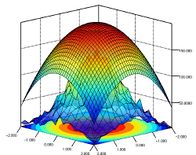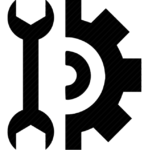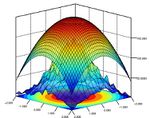DataMelt: Difference between revisions
Jump to navigation
Jump to search
No edit summary |
(improvements) |
||
| Line 1: | Line 1: | ||
{{Data mining and learning analytics tools | {{Data mining and learning analytics tools | ||
|field_logo= | |field_logo=Dm logo125px.png | ||
|field_screenshot= | |field_screenshot=Datamelt 2dhisto.jpeg | ||
|field_name=Computation and Visualization Environment | |field_name=Computation and Visualization Environment | ||
|field_developers=DataMelt community. Led by S.Chekanov | |field_developers=DataMelt community. Led by S.Chekanov | ||
|field_website=http://jwork.org/dmelt/ | |field_website=http://jwork.org/dmelt/ | ||
|field_data_tool_type=Application software | |field_data_tool_type=Application software | ||
|field_license_type=Free&Open source | |field_license_type=Free&Open source | ||
|field_free_software_licence=GPL / GNU for non commercial use. Commercial-friendly license is available | |field_free_software_licence=GPL / GNU for non commercial use. Commercial-friendly license is available | ||
| Line 19: | Line 18: | ||
DMelt creates high-quality vector-graphics images (SVG, EPS, PDF etc.) that can be included in LaTeX and other text-processing systems. | DMelt creates high-quality vector-graphics images (SVG, EPS, PDF etc.) that can be included in LaTeX and other text-processing systems. | ||
The program runs on Windows, Linux, Mac | The program runs on Windows, Linux, Mac OS. The package for the Android is called AWork. | ||
|field_analysis_orientation=General analysis | |field_analysis_orientation=General analysis | ||
|field_data_manipulation_type=Data transformation, Data analysis, Data visualisation | |field_data_manipulation_type=Data transformation, Data analysis, Data visualisation | ||
|field_data_transformation_capabilities=Mathematical transformation of data for analysis | |field_data_transformation_capabilities=Mathematical transformation of data for analysis | ||
|field_analysis_type=Data mining methods and algorithms | |field_analysis_type=Basic statistics and data summarization, Data mining methods and algorithms | ||
|field_visualisation_type=Sequential Graphic, Chart/Diagram, Map | |field_visualisation_type=Sequential Graphic, Chart/Diagram, Map | ||
|field_tool_usability= | |field_tool_usability=rather easy to use | ||
|field_end_user_type=Students/Learners/Consumers, Teachers/Tutors/Managers, Developers/Designers, Researchers, Organisations/Institutions/Firms | |||
|field_statistics_level=Advanced | |field_statistics_level=Advanced | ||
|field_programming_level=Basic | |field_programming_level=Basic | ||
| Line 40: | Line 31: | ||
|field_data_mining_models_level=Medium | |field_data_mining_models_level=Medium | ||
|field_completion_level=Medium | |field_completion_level=Medium | ||
|field_last_edition= | |field_last_edition=2018/05/23 | ||
}} | }} | ||
==History== | |||
DataMelt has its roots in [[particle physics]] where data mining is a primary task. It was created as [[jHepWork]] project in 2005 and it was initially written for data analysis for [[particle physics]]<ref> | |||
HEP data analysis using jHepWork and Java, arXiv:0809.0840v2, ANL-HEP-CP-08-53 preprint. CERN preprint, [https://arxiv.org/abs/0809.0840/ arXiv:0809.0840v2] | |||
</ref> using the [[Java (programming language)|Java]] software concept for [[International linear collider|International Linear Collider]] project developed at [[SLAC]]. Later versions of jHepWork were modified for general public use (for scientists, engineers, students for educational purpose) since the International Linear Collider project has stalled. In 2013, jHepWork was renamed to DataMelt and become a general-purpose community-supported project. | |||
The main source of the reference is the book "Scientific Data analysis using Jython Scripting and Java" | |||
<ref> | |||
Scientific Data analysis using Jython Scripting and Java. Book. By S.V.Chekanov, Springer-Verlag, ISBN 978-1-84996-286-5, [https://www.springer.com/us/book/9781849962865] | |||
</ref> | |||
which discusses data-analysis methods using [[Java (programming language)|Java]] and [[Jython]] scripting. | |||
Later it was also discussed in the German Java SPEKTRUM journal | |||
<ref> | |||
DataMelt – Werkbank für technisch-wissenschaftliche Berechnungen und Visualisierungen mit Java und Jython. by Rohe Klaus. Java SPEKTRUM. (in German) volume 5 (2013) 26-28 [https://www.sigs-datacom.de/fachzeitschriften/javaspektrum/archiv/artikelansicht/artikel-titel/integrationsspektrum-scavis-werkbank-fuer-technisch-wissenschaftliche-berechnungen-und-visualis.html] | |||
</ref>. | |||
The string "HEP" in the project name "jHepWork" abbreviates "High-Energy Physics". But due to a wide popularity outside this area of physics, it was renamed to [[SCaViS]] ('''S'''cientific '''C'''omputation and '''Vis'''ualization Environment). This project existed for 3 years before it was renamed to DataMelt (or, in short, DMelt). | |||



